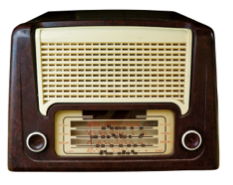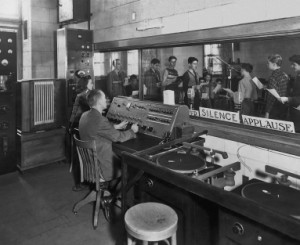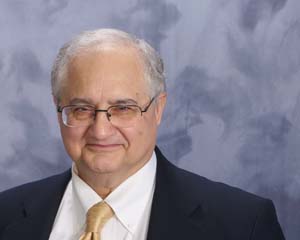Introduction to Distance Education: Educational Radio
Dr. Farhard (Fred) Saba, Ph. D.
Founder, Distance-Educator.comn
Educational radio is the first electronic medium educators used to teach at a distance. With the advent of broadcasting the federal government issued the first educational radio license to the Latter Day Saints’ University of Salt Lake City, in 1921. The University of Wisconsin and the University of Minnesota also received licenses to establish educational radio stations in 1922. (Saettler, 1990). As early as 1931, Levenson (1945) listed a series of evaluation studies conducted by Ohio State University and The University of Wisconsin demonstrating the effectiveness of radio in learning. The number of studies listed and the variety of research questions are indicative of the ubiquity and popularity of the use of radio in education. For example, research questions ranged from the “relative effectiveness of short and long sentences,” to “the value of repetition in the presentation of different types of material,” to development of new instruments of evaluation. (pp. 192-197).
 Similar to correspondence education an important aspect of early educational radio was supporting the farmers. Beginning in 1914 the U. S. Department of Agriculture developed a network of extension education activities for the farmers through state agricultural colleges. Radio became a natural medium for agricultural extension education in many states that had vast amounts of land dedicated to farming.
Similar to correspondence education an important aspect of early educational radio was supporting the farmers. Beginning in 1914 the U. S. Department of Agriculture developed a network of extension education activities for the farmers through state agricultural colleges. Radio became a natural medium for agricultural extension education in many states that had vast amounts of land dedicated to farming.
By 1925 the federal government acknowledged the importance of providing information and education via radio to farmers and called for providing specific frequencies within the broadcast band for radio stations serving agricultural communities (Department of Commerce, 1925). One of those radio stations was KKSU at Kansas State that it is still broadcasting. (http://www.oznet.ksu.edu/kksu/). Kansas State Agricultural College began experimenting with radio broadcasting as early as 1901 as a weather reporting station. On December 1, 1924 KKSU became the first educational radio station in Kansas pioneering the broadcast of spoken words and music in the state.
By the 1930s the U. S. Department of Education had also an active role in educational radio. Laine (1939) depicted the thriving scene of educational radio by describing the various programs sponsored by the U. S. Department of Education at the national level, and the many state supported programs. Subjects of these radio broadcasts ranged from science and history to issues related to civil rights. Some of the program titles included; Let the Freedom Ring, Trial by Jury, Free Assembly, Women’s and Children’s Rights, and Free Press. In addition, the U. S. Department of Education made agreements with the National Broadcasting Company (NBC) and The Columbia Broadcasting System (CBS) for producing and broadcasting a variety of programs with educational content. Such programs were as diverse as music education to those containing religious themes.
 This broad range of programs brought to light one of the major criticisms of the definition of the use of mass media in education. Willey, and Young (1948) in their study of the use of radio in elementary education reported two contending schools of thoughts. Some educators, such as W. W. Charters, Director of the Bureau of Educational Research of Ohio State University offered a more expansive definition of educational radio: An educational program is one which raises the standards of taste, increases the range of valuable information, or stimulates the audience to undertake worthwhile activities. (p. 17). Others, according to Willey and Young (1948), had a more limited interpretation of the definition of educational radio and thought a program is educational if it is produced for such expressed purpose.
This broad range of programs brought to light one of the major criticisms of the definition of the use of mass media in education. Willey, and Young (1948) in their study of the use of radio in elementary education reported two contending schools of thoughts. Some educators, such as W. W. Charters, Director of the Bureau of Educational Research of Ohio State University offered a more expansive definition of educational radio: An educational program is one which raises the standards of taste, increases the range of valuable information, or stimulates the audience to undertake worthwhile activities. (p. 17). Others, according to Willey and Young (1948), had a more limited interpretation of the definition of educational radio and thought a program is educational if it is produced for such expressed purpose.
This controversy has not been settled; even now that educators have access to media that are much more powerful than radio. Willey and Young (1948) analyzed other similar issues that still linger on and have not been resolved yet as educators experiment with similar audio- based media, such as podcasting.
These could be summarized in the following points:
- Listening to radio develops “intellectual passivity.”
- Radio is a one-way means of communication.
- It is hard to adjust instruction by radio to the “capacity of the individual pupil.”
- Listening to radio is less effective than face-to-face communication due to lack of the speaker’s “facial expressions and gestures.”
- Broadcast times are hard to adjust to class schedules.
- Programs are produced by radio artist and financiers, and not by educators.
- Programs are not based on school curriculum.
- “Too many teachers have had to work too many hours at too many chores. We cannot expect them to assume the labor of producing or using radio broadcasts without time allowance and without proper training.”
REFERENCES
Levenson, W. B. (1945). Teaching through radio. NY: Rinehart & Company Inc.
Saettler, P. (1990). The evolution of American educational technology. Englewood, CO: Libraries unlimited.
U. S. Department of Commerce. (1926). Proceedings of the Fourth National Radio Conference and recommendations for regulation of radio. Washington, D. C., November 9-11, 1925. Government Printing Office. Retrieved from http://earlyradiohistory.us/1925conf.htm/.
Willey, R. D., Young, H. A. (1948). Radio in elementary education. Boston, MA: D. C. Heath and Company.
ARTICLES IN THIS SERIES
Introduction to Distance Education: Conceptual Development
Introduction to Distance Education: Correspondence Education








